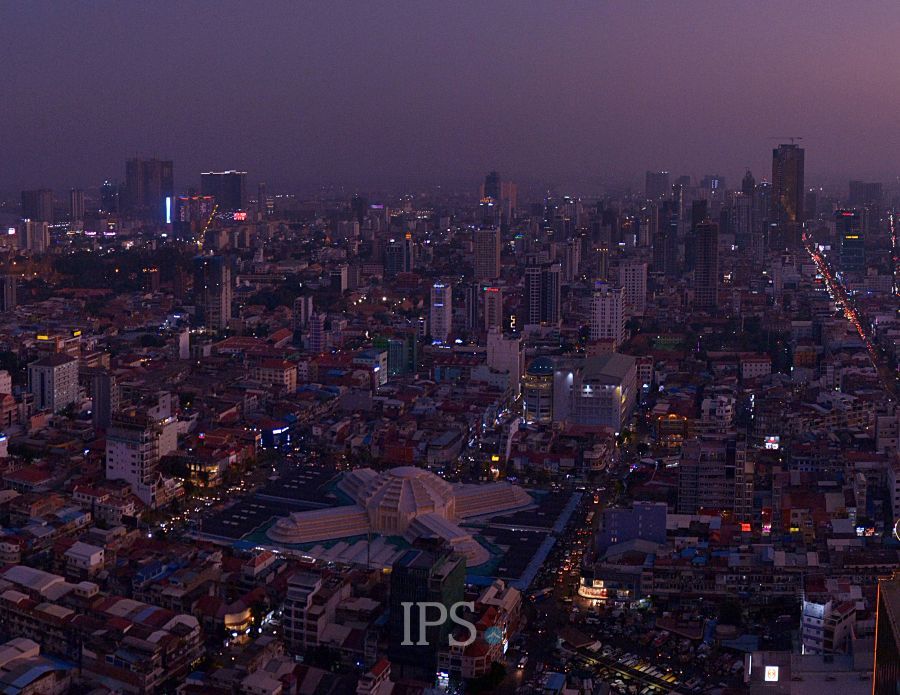Cambodia’s Population and Urbanisation Trends: Growth and Opportunities
Cambodia’s population sits around 17.4 million in 2023 and projections indicate significant growth, with an estimated population of 23 million by 2030 and 32.5 million by 2050, reflecting an annual growth rate of 1.06%. Alongside this population growth, urbanisation rates in Cambodia are also on the rise. This article explores the implications of these trends, the factors driving the growth, and the opportunities present for various industries.
Currently, 24.2% of the Cambodian population resides in urban areas. However, this percentage is projected to increase to 30.6% by 2030 and 41.1% by 2050. This progression of urbanisation is reshaping the social and cultural landscape as more individuals embrace city life and new cultures are introduced.
Factors Driving Population Growth
The increase in life expectancy in Cambodia, which currently stands at 67.7 years, plays a significant role in population growth. As people live longer, they contribute to the overall population expansion. Additionally, various socioeconomic factors, such as economic growth and improved living standards, also contribute to the rising population.
Urban vs. Rural Population
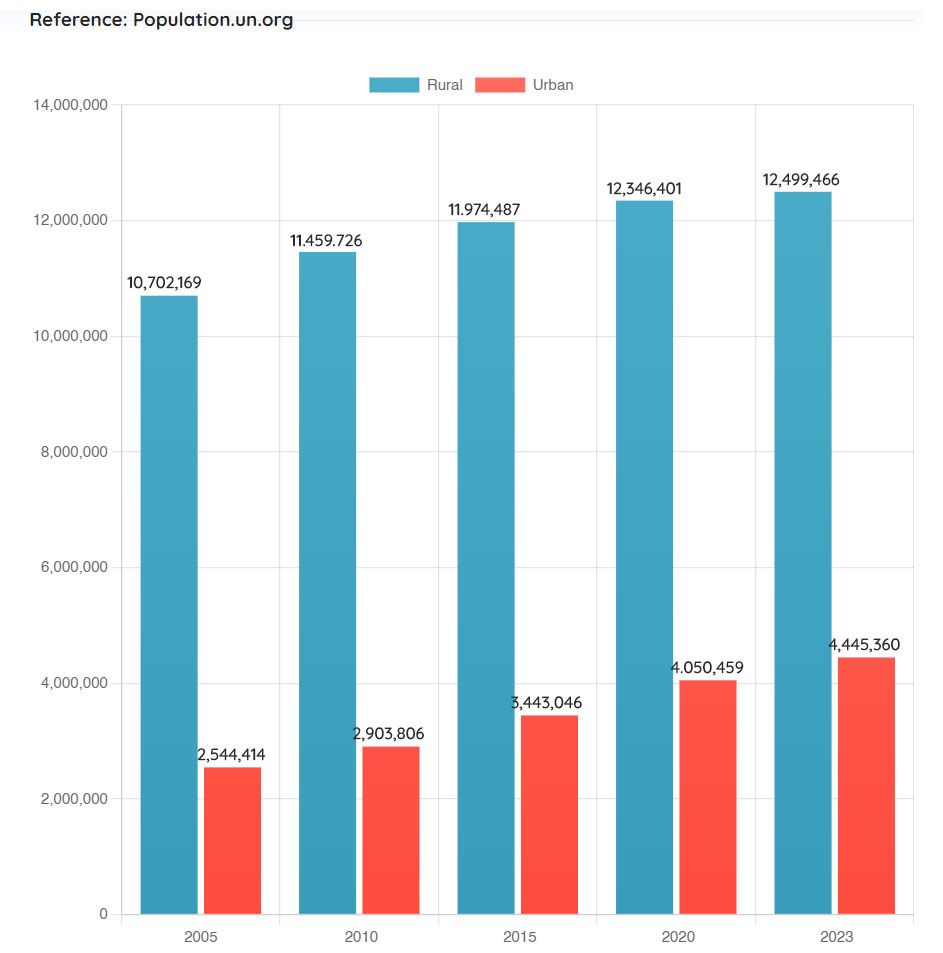
Life Expectancy at Birth (Years)
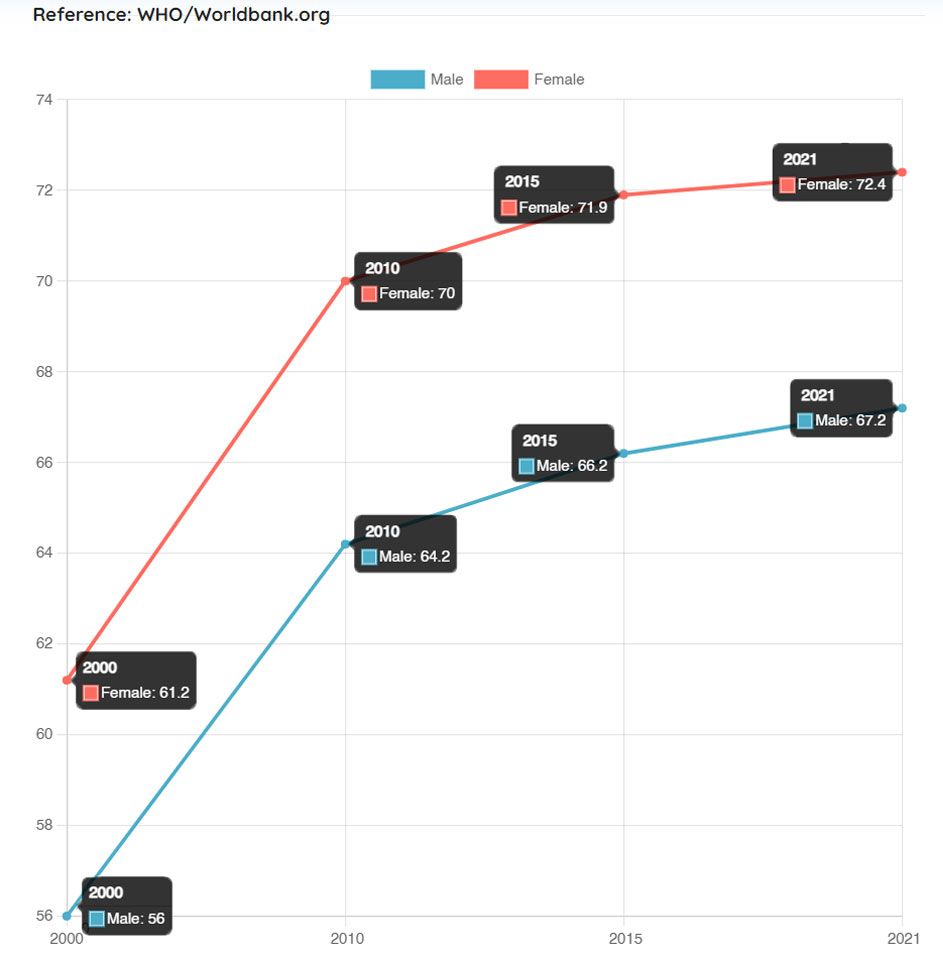
Opportunities
As the population continues to grow and the economy continues to expand, the increased demand for construction creates substantial opportunities for construction businesses and property investors, both local and foreign. These upward trends in development encourage economic growth and job creation, fostering a positive investment climate.
Young Population in Cambodia
The percentage of the population in Cambodia under the age of 30 is 65.3%. This means that over two-thirds of the country’s population is under the age of 30. This is a significant number, and it has several positive implications for the country.
The Demographic Dividend
The large youth population plays a vital role in boosting Cambodia’s economic growth. Cambodia is currently enjoying a demographic dividend, which means the country has a large number of young people entering the workforce. This increase in labour force has resulted in higher levels of productivity and economic growth. Additionally, the youthful population is more likely to be educated, contributing to Cambodia’s economic growth.
Median age in Cambodia
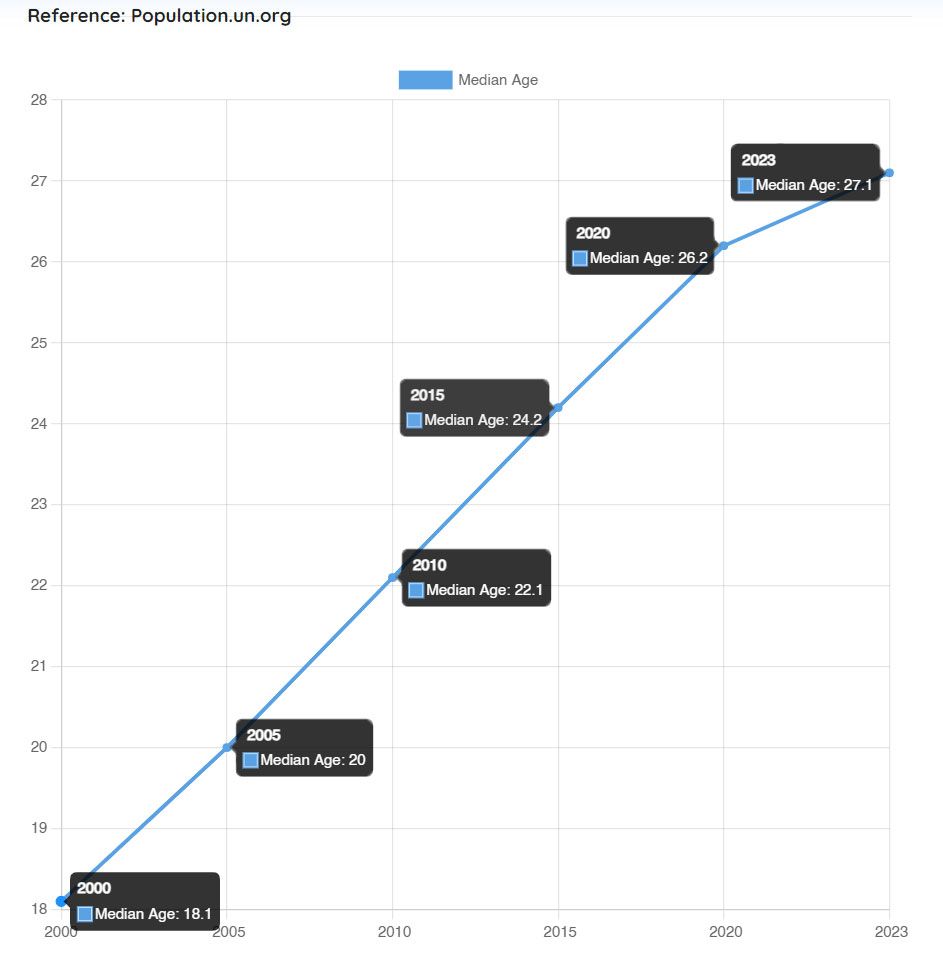
Opportunities for Social and Economic Development
The large youth population in Cambodia presents a unique opportunity for the government to harness the energy and creativity of young people to drive sustainable economic growth and social development. By creating programs and initiatives targeted at young people, Cambodia can unlock their potential for long-term development.
This has also created a vast and agile workforce that can propel the country forward in terms of economic growth and competitiveness, making Cambodia a critical player on the world stage.
Labor Force
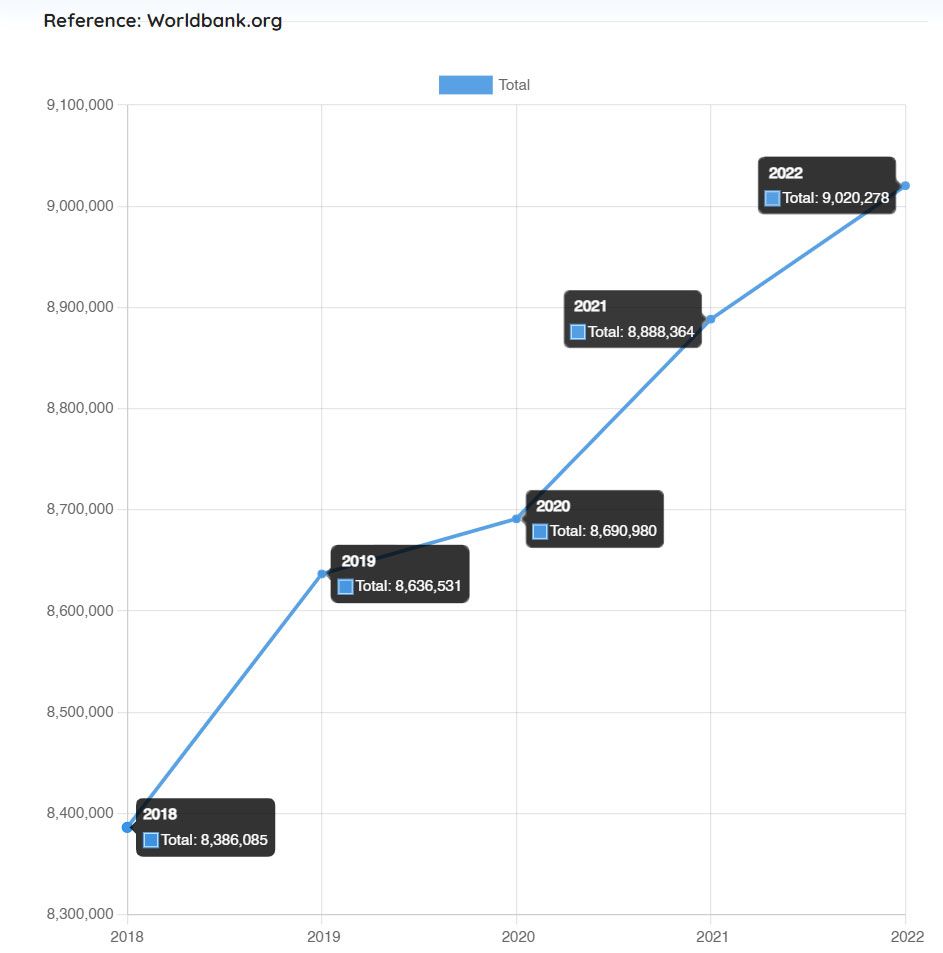
Growing Middle Class in Cambodia
Cambodia has witnessed a significant expansion of its middle class in recent years. According to the World Bank, the proportion of the middle-class population in Cambodia surged from 23% in 2010 to 42% in 2019. This growth can be attributed to various factors, including:
Economic Growth
Cambodia’s economy has experienced an average annual growth rate of 7.7% over the past two decades, positioning it among the world’s fastest-growing economies. This robust growth has generated new job opportunities and income growth for Cambodians.
Urbanisation
Cambodia is undergoing rapid urbanisation, with the urban population projected to reach 50% by 2030. This urban shift has led to increased demand for consumer goods and services, thereby benefiting the middle class.
Foreign Investment
In recent years, Cambodia has attracted substantial foreign investment, which has contributed to job creation and economic advancement. This influx of investment has also introduced new technologies and business practices, resulting in positive outcomes for the middle class.
Urbanisation (% of total population) – Cambodia
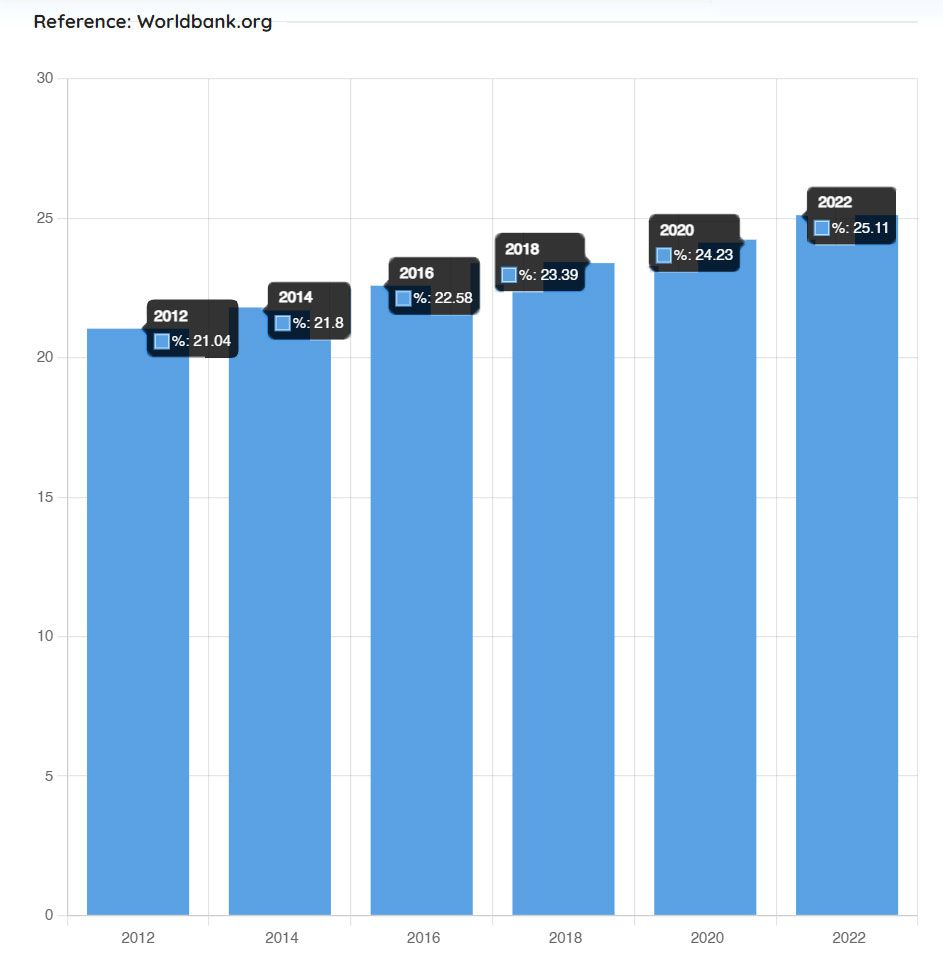
The expansion of Cambodia’s middle class holds several positive implications for the country, including:
- Increased consumption: Higher spending on goods and services by the middle class stimulates economic growth.
- Growing demand for education and health care: The middle class seeks better education and health care for their families, prompting improvements in these sectors.
- Enhanced investment in infrastructure: The middle class demands improved infrastructure, such as roads, bridges and airports. This has prompted the government to make investments in these areas.
- Increased social mobility: A burgeoning middle class is fostering opportunities for upward social mobility among Cambodians, contributing to a more equitable society.
The growth of Cambodia’s middle class is a positive trend that is bringing numerous benefits to the country. This phenomenon is expected to continue in the coming years, presenting new opportunities for businesses and investors while improving the lives of Cambodian citizens.
• Introduction to Cambodia
» Introduction to Phnom Penh
» Introduction to Siem Reap
» Monarchy & Government
• Tourism & Residency
» Thriving Tourism Industry
» Visas in Cambodia
• Healthcare & Education
» Healthcare in Cambodia
» Education in Cambodia
» International Schools in Cambodia
• Technology
» The Rise of Technology in Cambodia


